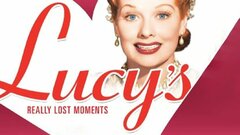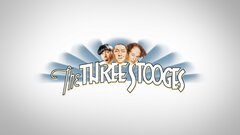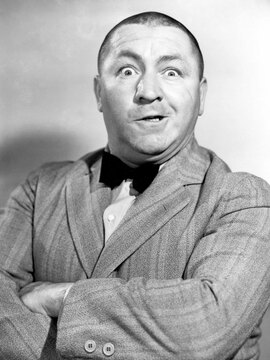Though not an original member of the iconic comedy trio, Jerome "Curly" Howard was by far the most popular of The Three Stooges and represented what was inarguably the group's golden era. The youngest of the five Howard brothers, Curly joined his sibling Moe and Larry Fine as one of vaudeville comedian Ted Healy's Stooges after replacing another brother, Shemp, in 1932. After Healy moved on to a solo career, Larry, Moe and Curly signed with Columbia Pictures as the Three Stooges and began cranking out such side-splitting classics as "Hoi Polloi" (1935), "Disorder in the Court" (1936) and "A Plumbing We Will Go" (1940). Appearing in nearly 100 two-reel shorts with Larry and Moe, Curly was adored as the hyperkinetic man-child of the group, filled with false bravado and blessed with an unbreakable skull. Whether bellowing out his signature, "Woo-woo-woo!" or spinning around on the floor like a broken top, Curly's antics proved the high point of nearly every Stooge short, right up until his final appearance in "Half-Wits Holiday" (1947). Declining health, brought on by rich foods, alcohol and the strains of success, dulled Curly's comedic brilliance in the mid-1940s, prior to a debilitating stroke that forced him into retirement. Although Shemp returned to stand in for his younger brother on the Stooge roster, in the hearts and funny bones of diehard fans, there would never be a replacement for the most beloved of Stooge - Curly Howard.
Born Jerome Lester Horwitz on Oct. 22, 1903 in the Bath Beach section of Brooklyn, NY, he was the youngest of five sons born to Jennie and Solomon Horwitz. A relatively docile child - at least in comparison to his raucous older siblings - he was nicknamed "Babe" by his older brother, Moe. Although a poor student - he would be described as a constant daydreamer by friends and family throughout his life - Jerome excelled in athletics while in grade school. But it was the stage that soon began to appeal to the youngster, especially in light of the fact that Moe and his other brother, Shemp, were making strides in the theater by their early teens. Having first performed with Moe and Shemp in productions mounted in their basement for friends and family, Jerome idolized his older brothers, while he himself enjoyed popularity for his abilities as a ballroom dancer and singer. He landed his first professional theatrical job in 1928 as a guest conductor for the Orville Knapp Band. As Jerome waved his baton furiously, a specially-designed breakaway suit would separate, piece by piece, much to the audience's delight. This first small taste of the spotlight only increased Jerome's thirst for fame as he watched Moe and Shemp enjoy growing success as part of a popular vaudeville act known as Ted Healy and his Stooges.
Shortly after Healy and his troupe - which also consisted of a third comedian, Larry Fine - had appeared in the Rube Goldberg comedy, "Soup to Nuts" (1930), the group returned to New York for the Broadway production of "The Passing Show of 1932." However, a combination of a contract dispute and Shemp's growing dissatisfaction with the domineering, alcoholic Healy quickly led to the older Howard leaving the group. In need of a third Stooge, Moe quickly suggested his younger brother, Jerome. Healy, however, was unimpressed, stating that Jerome's handsome mane of auburn hair and handlebar mustache made his appearance decidedly unfunny. Desperate to join his brother, he quickly dashed to the nearest barber shop and had his head and face shaved clean. Deemed appropriately funny looking by Healy, Jerome was quickly made a Stooge and given the suddenly ironic nom de guerre of "Curly." A contract with MGM followed, with Curly and his new cohorts livening up the proceedings in several films with Healy and such MGM stars as Clark Gable and Joan Crawford.
Eventually, Healy - who was being groomed for stardom by MGM - ventured on to a solo career of his own, leaving Larry, Moe and Curly free to sign up with Columbia Pictures, where the trio would make no fewer than 190 "two-reel" short films between 1934 and 1958. The first of the official Three Stooges films was the "musical novelty" short, "Women Haters" (1934), in which the boys - as characters NOT called Larry, Moe and Curly for the only time - hilariously tried to resist the charms of the fairer sex. Though still in an early form, all the iconic Stooges comedy bits were present - the eye pokes and exaggerated sound effects, even Curly's signature laugh of, "Nyuck, nyuck, nyuck." That same breakout year marked several other "first and only" milestones for Curly and his siblings in slapstick. "Punch Drunks" (1934) - in which Curly is exploited in the boxing ring after Moe discovers that he flies into an uncontrollable rage whenever he hears "Pop Goes the Weasel" - was the only effort crediting all Three Stooges as writers. The first romp to feature the catchphrase "Calling Dr. Howard, Dr. Fine, Dr. Howard," the short, "Men in Black" (1934) was also the only Stooge film to be nominated for an Academy Award for Best Short Subject.
Before long, the Three Stooges had become Columbia's most popular short-subject attraction and it was due in large part to Curly's considerable contributions. Never having received any professional training as a performer, his comedic instincts were remarkable, especially his abilities as an improviser. Gleefully channeling the six-year-old child within, Curly would suddenly bark like a dog at a towering adversary then let out a trademark, "N'gyahh-ahhh-ahh!" as he scurried away from the threat of violence. Equally adept at physical comedy, Curly's baseball-shaped skull seemed all but impervious to both saw blades and hammer heads. While youngsters were reduced to giggling hysterics by the Stooges particular brand of violent tomfoolery, parents were notoriously wary of the material, fearing their impressionable children might imitate the trademark eye gouges or nose plier-pinching. Truth be told, the onscreen rough-housing occasionally did result in a cracked rib or skull for the committed comedians. The 1940s and America's entry into World War II soon provided Curly and the Stooges with one of their easiest targets ever - Adolph Hitler. Moe caricatured the Nazi dictator for the first time as the puppet leader of the country "Moronica" in the side-splitting satire, "You Nazty Spy!" (1940). They took more swipes at the Axis powers to hilarious effect in consequent shorts like, "I'll Never Heil Again" (1941) and "They Stooge to Conga" (1943).
In contrast to his childlike onscreen persona, behind the scenes, America's favorite Stooge was a far cry from the carefree spirit he portrayed. By the mid-1940s, he had already been in a succession of three brief and unhappy marriages. With increased fame and an ever-accelerating workload came stress and fatigue. Food and alcohol became crutches for Curly. Before long, their adverse effects noticeably dulled his performance in films like "Idle Roomers" (1944) and "Idiots Deluxe" (1945). At Moe's insistence, Curly checked himself into a hospital to recuperate from several maladies - hypertension and obesity among them - but the demands of the studio soon brought him back before the cameras, ultimately with disastrous results. During the filming of "Half-Wits Holiday" (1947), Curly suffered a debilitating stroke that forced him to retire from show business. Optimistic as they were, Moe and Larry hoped that Curly's withdrawal would be a temporary one and convinced a reluctant Shemp to rejoin the group until their younger brother felt well enough to return. Unfortunately, the recuperation never came. Other than a brief cameo in "Hold That Lion" (1947) - featuring the only scene in which Moe, Larry, Shemp and Curly all appeared onscreen together - Curly never performed again.
While attempting to recover from the stroke, Curly met a young woman named Valerie Newman, who he married in the summer of 1947. Described by acquaintances as one of the few bright spots during Curly's unhappy final years, Valerie gave birth to a daughter, Janie, the following year. Sadly, the happiness would be short-lived, as the entertainer's health continued to decline. Following a second stroke in 1948, a wheelchair-bound Curly was shuttled from one medical facility to another, growing weaker and more infirmed with each passing year. Eventually, his mental state had deteriorated to such a degree that Moe was forced to place his brother in a sanitarium in 1951. Through it all, Valerie remained by his side until Curly died from a massive cerebral hemorrhage on Jan. 7, 1952 at the tragically young age of 48. Although the comedy team would carry on in various incarnations for nearly three more decades, for the vast majority of fans, there would only ever be one true version of The Three Stooges - Larry, Moe and Curly.
By Bryce Coleman















































![CAPTAIN HATES THE SEA, THE, Moe Howard, Larry Fine, Curly Howard [The Three Stooges], 1934](https://media.baselineresearch.com/images/422118/422118_small.jpg)






